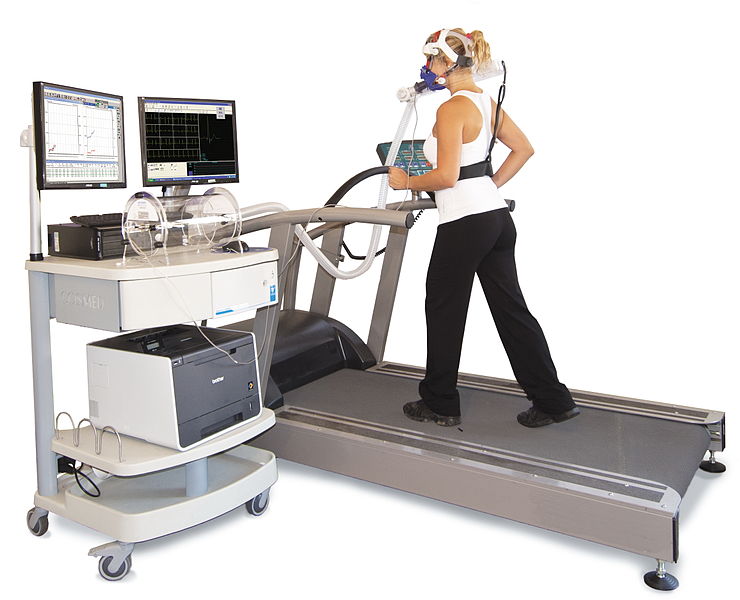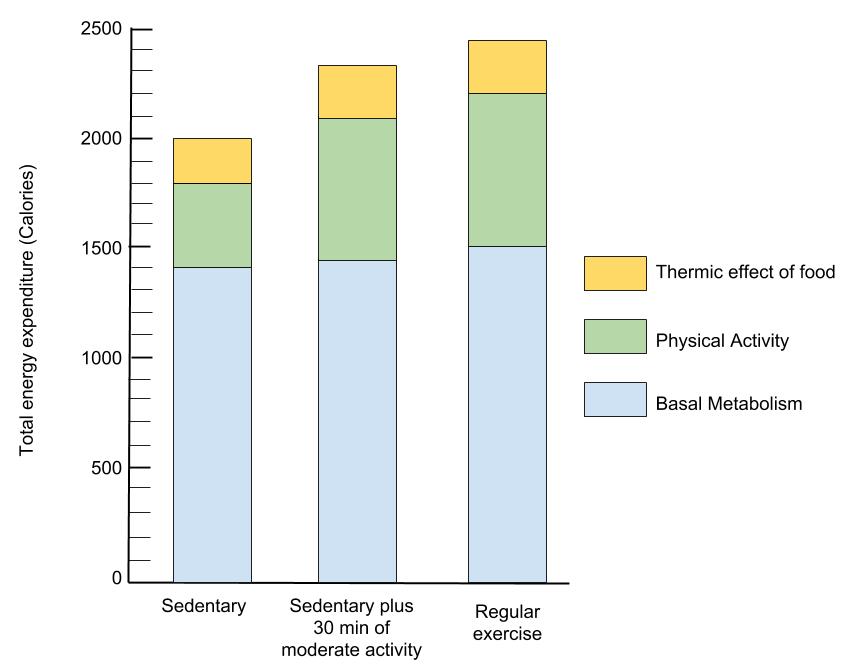7.8 – The Essential Elements of Physical Fitness
Learning Objective
- Explain the terminology related to physical fitness
Cardiorespiratory Endurance
Cardiorespiratory endurance is enhanced by aerobic training which involves activities that increase your heart rate and breathing such as walking, jogging, or biking. Building cardiorespiratory endurance through aerobic exercise is an excellent way to maintain a healthy weight. Working on this element of physical fitness also improves your circulatory system. It boosts your ability to supply the body’s cells with oxygen and nutrients, and to remove carbon dioxide and metabolic waste. Aerobic exercise is continuous exercise (lasting more than 2 minutes) that can range from low to high levels of intensity. In addition, aerobic exercise increases heart and breathing rates to meet increased demands for oxygen in working muscles. Regular, moderate aerobic activity, equal to 150-300 minutes per week is recommended in the Second Edition of the Physical Activity Guidelines for Americans to reduce the risk of a large number of chronic diseases. You can access the full report here. Strengthening your heart muscle through aerobic exercise and increasing the blood volume pumped in each heartbeat will lead to a lower resting heart rate for healthy individuals. Aerobic exercise increases the ability of muscles to use oxygen for energy metabolism, therefore, creating A.T.P..
Aerobic capacity or VO2 is the most common standard for evaluating cardiorespiratory endurance. VO2 max is your maximal oxygen uptake, and the VO2 max test measures the amount of oxygen (in relation to body weight) that you can use per minute. A test subject usually walks or runs on a treadmill or rides a stationary bicycle while the volume and oxygen content of exhaled air is measured to determine oxygen consumption as exercise intensity increases. At some point, the amount of oxygen consumed no longer increases despite an increase in exercise intensity. This value of oxygen consumption is referred to as VO2 max, ‘V’ meaning volume, and ‘max’ meaning the maximum amount of oxygen (O2) an individual is capable of utilizing. The higher the number, the more oxygen you can consume, and the faster or longer you can walk, run, bike, or swim, among other aerobic activities. VO2 max can increase over time with training.

By Cosmed / CC BY-SA 3.0
Muscle Strength
Muscle strength is developed and maintained by weight or resistance training that often is called anaerobic exercise. Anaerobic exercise consists of short duration, high-intensity movements that rely on immediately available energy sources and require little or no oxygen during the activity. This type of high-intensity training is used to build muscle strength by short, high-intensity activities. Building muscle mass is not just crucial for athletes and bodybuilders—building muscle strength and endurance is important for children, seniors, and everyone in between. The support that your muscles provide allows you to work, play, and live more efficiently. Strength training involves the use of resistance machines, resistance bands, free weights, or other tools. However, you do not need to pay for a gym membership or expensive equipment to strengthen your muscles. Homemade weights, such as plastic bottles filled with sand, can work just as well. You can also use your own body weight and do push-ups, leg squats, abdominal crunches, and other exercises to build your muscles. If strength training is performed at least twice a week, it can help to improve muscle strength and to increase bone strength. Strength training can also help you to maintain muscle mass during a weight-loss program.
Flexibility
Flexibility is the range of motion available to your joints. Yoga, tai chi, Pilates, and stretching exercises work to improve this element of fitness. Stretching not only improves your range of motion, but it also promotes better posture and helps you perform activities that can require greater flexibility, such as chores around the house. In addition to working on flexibility, older adults should include balance exercises in their regular routine. Balance tends to deteriorate with age, which can result in falls and fractures.

Graph’s y-axis shows energy expenditure from 0 to 2500 calories versus 3 types of physical activity on the x-axis represented by 3 vertical bar charts with sections of 1. thermic effect of food 2. physical activity and 3. basal metabolism.
Key Takeaway
Physical Activity Recommendations
Adults should get at least 150 to 300 minutes of moderate-intensity aerobic physical activity or 75 minutes to 150 minutes of vigorous-intensity aerobic physical activity each week. In addition to aerobic physical activity, it is recommended that adults do muscle-strengthening activities on each major muscle group two or more times each week. To learn more about these guidelines visit this website.
Contributors
The University of Hawai’i at Mānoa Food Science and Human Nutrition Program: Allison Calabrese, Cheryl Gibby, Billy Meinke, Marie Kainoa Fialkowski Revilla, and Alan Titchenal contributed to this page.

